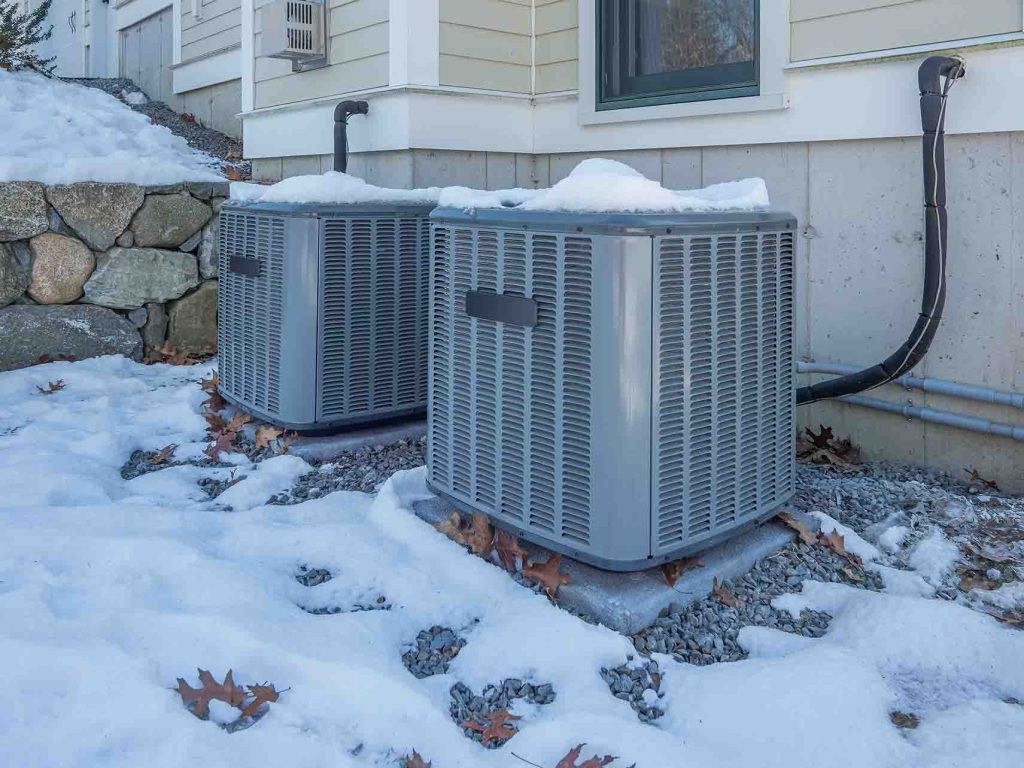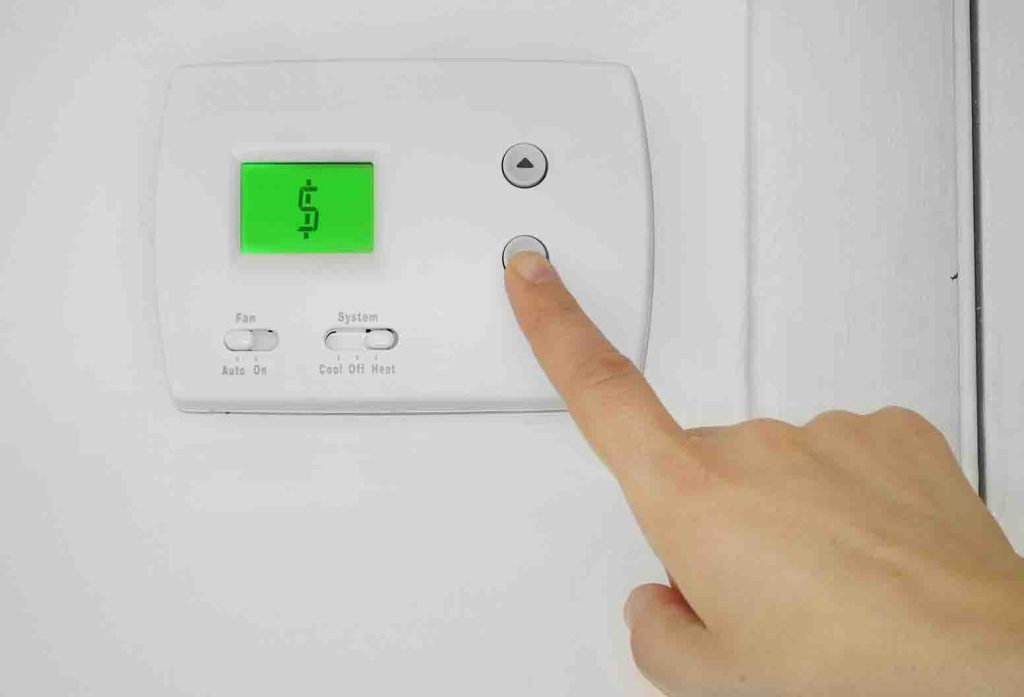When it comes to selecting a new HVAC system, it’s crucial to understand the various efficiency ratings that manufacturers use to help consumers make informed decisions. The two most important and valuable ratings to keep in mind are SEER (Seasonal Energy Efficiency Ratio) and EER (Energy Efficiency Ratio). These ratings provide beneficial insights into an HVAC system’s performance, but they serve different purposes.
The Clean Air team put this guide together to help you understand some of the important differences between SEER and EER ratings for HVAC systems, allowing you to make an informed choice when upgrading your heating and cooling system. Keep reading to learn more!
What Is The SEER Rating?

The SEER rating is a standard metric used to assess the efficiency of air conditioning systems. It measures how well a system performs over an entire cooling season (hence the “S” in “SEER”). SEER is calculated by dividing the total cooling output (measured in British Thermal Units or BTUs) over a cooling season by the total electricity consumed in watt-hours. The higher the SEER rating, the more efficient the system.
SEER accounts for changes in temperature throughout the cooling season. This means it provides a more accurate representation of how the system will perform in real-world conditions. In many regions, there are minimum SEER requirements for new installations, enforced by government regulations. This encourages the use of more energy-efficient systems.
What Is The EER Rating?

EER, on the other hand, stands for Energy Efficiency Ratio. It’s a measurement of an HVAC system’s efficiency at a specific point in time, typically under standard conditions. EER is calculated by dividing the cooling capacity in BTUs by the electricity input in watts. Similarly to SEER ratings, a higher EER means the system is running more efficiently at that specific moment.
EER is determined under fixed conditions, such as a constant indoor and outdoor temperature. This makes it useful for evaluating how well a system performs under controlled circumstances. This type of rating is commonly used in commercial and industrial settings where conditions are more consistent. It helps businesses choose HVAC systems that suit their specific needs.
Key Differences Between SEER & EER Ratings

Now that we understand the basics of SEER and EER, let’s look more closely at the real question: how are they different? There are situations in which one type of rating could provide more useful information than the other type. Certain circumstances, such as climate or type of house/building, can make a bigger difference in SEER vs. EER ratings. For these reasons, it is important to know some of the key differences between these ratings in order to make sure you are understanding and optimizing HVAC efficiency. The comparisons below will help you better understand the main differences between the two types of ratings.
Measurement
- SEER: Measures the efficiency of HVAC systems over an entire cooling season, considering real-world variations in temperature and part-load operation.
- EER: Provides an instantaneous efficiency measurement at a specific point in time, often under controlled laboratory conditions.
Timeframe
- SEER: Long-term efficiency metric.
- EER: Short-term efficiency metric.
Climate
- SEER: Takes into account seasonal temperature variations, making it suitable for regions with fluctuating climates.
- EER: Often used in regions with relatively constant temperatures, as it doesn’t consider seasonal variations.
Representation
- SEER: Reflects the real-world performance of HVAC systems, making it a better choice for residential air conditioners and heat pumps.
- EER: Provides a controlled, theoretical efficiency value, which may not be as representative of real-world operation.
Applications
- SEER: Primarily used for residential air conditioners and heat pumps.
- EER: Commonly used for window air conditioners and commercial cooling systems.
Calculations
- SEER: Calculated as the total cooling output divided by the total electrical energy input over a full cooling season.
- EER: Calculated as the cooling output divided by the electrical input at a specific moment, typically under standard laboratory conditions.
Functionality
- SEER: Helps consumers evaluate the long-term energy efficiency of HVAC systems for residential use.
- EER: Provides a quick reference point for comparing immediate efficiency, often used in commercial and industrial settings.
Regulations
- SEER: Mandated by energy efficiency regulations for residential HVAC systems in many regions.
- EER: Less commonly mandated by regulations and typically applies to specific types of cooling equipment.
Conservation
- SEER: Used to estimate potential energy savings over an entire cooling season, which can help homeowners make informed decisions.
- EER: Less practical for estimating long-term energy savings due to its single-point measurement nature.
Temperature
- SEER: Takes into account both high-temperature summer conditions and milder spring and fall temperatures.
- EER: Often measured under specific, moderate temperature conditions and may not account for extreme weather.
The Role Of Climate In SEER & EER Ratings

Climate plays a pivotal role in determining both SEER and EER ratings for HVAC systems. SEER ratings are particularly sensitive to climate as they assess an HVAC system’s performance over an entire cooling season. These ratings take into account the full spectrum of environmental conditions, including extreme heat in summer and more moderate temperatures in transitional seasons. This comprehensive evaluation is crucial because it reflects how efficiently the system operates in real-world, variable climates, making SEER ratings an excellent choice for regions with diverse weather patterns.
EER ratings, which provide an immediate efficiency measurement, are less climate-dependent as they are determined under controlled conditions. EER is better suited for areas with relatively constant temperatures where current/real-time efficiency is a more relevant metric. Thus, climate plays a central role in shaping the applicability and relevance of SEER and EER ratings, guiding consumers in selecting HVAC systems that align with their specific environmental conditions and energy efficiency needs.
Which Rating Is More Important?
It is not strictly accurate to say one rating is more important than the other. Each rating is used under different circumstances and provides different sets of information.
- SEER ratings should be considered when evaluating HVAC systems for regions with variable climates and distinct seasonal temperature changes. SEER takes into account the performance of the system over an entire cooling season, making it ideal for areas where summers bring sweltering heat and winters experience milder temperatures. Homeowners in such regions can benefit from SEER ratings as they provide a comprehensive view of an HVAC system’s efficiency under real-world conditions, helping them make informed choices for year-round comfort and energy savings.
- EER ratings are more relevant when considering HVAC systems for regions with relatively stable or constant temperatures throughout the year. In these areas, instant efficiency measurements provided by EER can be a useful metric for assessing the system’s efficiency under consistent climate conditions. EER is often applied to window air conditioners and certain commercial cooling systems where immediate, constant cooling performance is of primary importance. Therefore, the choice between SEER and EER ratings should be based on the specific climate of the installation location, ensuring that the selected HVAC system aligns with the local weather patterns and operational needs.
Why You Should Know Your HVAC’s Ratings!

Knowing your HVAC system’s SEER and EER ratings is of paramount importance because it allows you to make informed decisions regarding your heating and cooling needs, energy efficiency, and cost savings. These ratings provide a clear understanding of how efficiently your HVAC system operates in different contexts. SEER helps you assess long-term efficiency over a full cooling season, helping you plan for energy savings and overall system performance. On the other hand, EER provides a snapshot of efficiency, useful for quick comparisons and applications where instantaneous efficiency is crucial.
By understanding both ratings, you can choose an HVAC system that best suits your climate, energy efficiency goals, and budget, ensuring that you enjoy optimal comfort while minimizing energy costs and environmental impact. Call Clean Air today for more information on how you can improve your system’s SEER and EER ratings!




